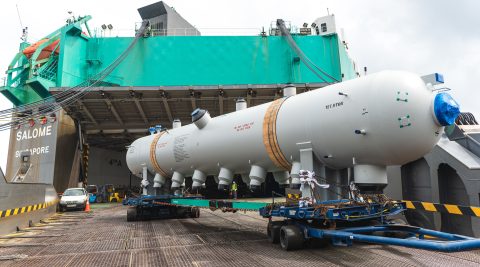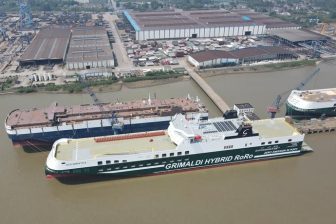
Supply chain disruptions creating imbalance in breakbulk handling equipment availability
Availability of handling equipment for breakbulk transport is one of the challenges in the current market. Congested ports, labour shortages driven by high cargo volumes and ongoing pandemic-related issues, and the general imbalance between demand and supply mean supply chain disruptions remain commonplace in 2022.
Handling equipment is one piece of the global logistics puzzle, meaning it’s not immune to the imbalance in tonnage demand and congestion hampering supply chains. “For example, if the pick-up of cargo from handling equipment is delayed due to labour shortages or stretched trucking capacity at the discharge port, then that will have a knock-on effect on how quickly we can reposition that piece of handling equipment and make it available for cargoes in other ports,” says Wallenius Wilhelmsen’s head of equipment Johanna Karlberg.
She further noted that the widespread port congestion is another factor, as this can delay the general flow of empty handling equipment and make it more difficult to plan. Given the current short tonnage situation, vessel schedules might also change unexpectedly, meaning a port call where handling equipment was due to be loaded or discharged is cancelled and a new plan needs to be created at short notice.
Meanwhile, a lack of spare parts due to supply chain disruptions could impact the speed of handling equipment repairs and maintenance.
Karlberg also noted that there has been a global shift in the general flow of cargo on handling equipment. “Whereas historically our handling equipment was mainly repositioned empty to Europe from both the US and Asia, we are now balancing the empty repositioning flow between Europe and Asia where export volumes have increased considerably. With both the current global tonnage shortage and the high demand for tonnage in Asia, we could see fewer sailings calling at European ports, which might mean a delay in empty handling equipment being discharged in Europe,” she said.
This results in longer than normal lead time to distribute handling equipment for export cargo.
Karlberg stressed that clients have a large role to play in the current market as they can deliver export cargo to loading ports five to seven days before vessel’s arrival, instead of ten days prior, reducing waste and helping ease port congestion and redeployment of equipment elsewhere.
Also read: Wallenius Wilhelmsen: renewables, infrastructure to boost breakbulk industry



